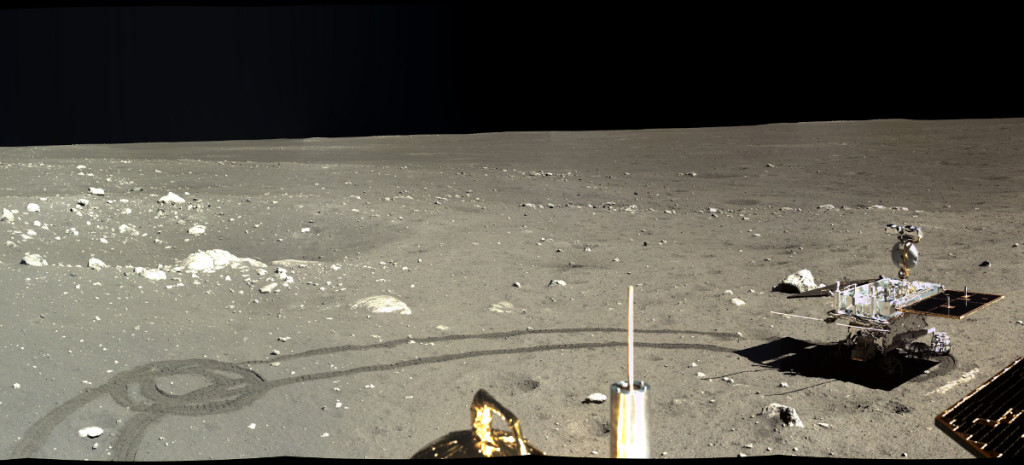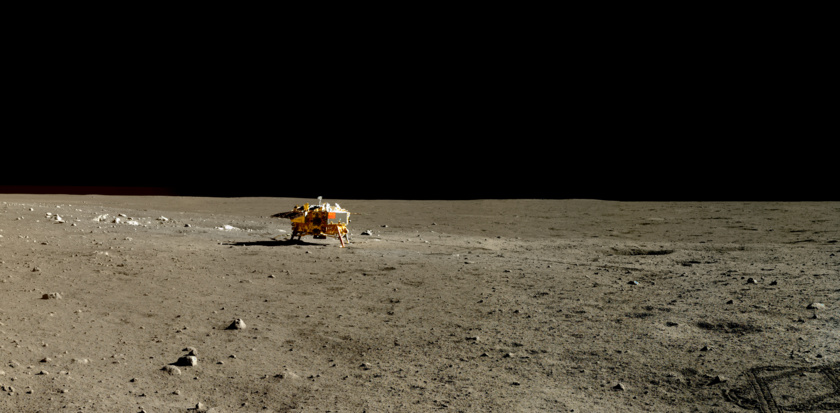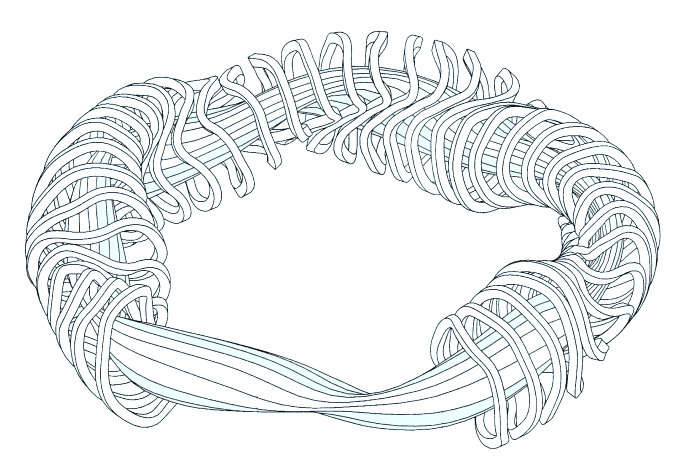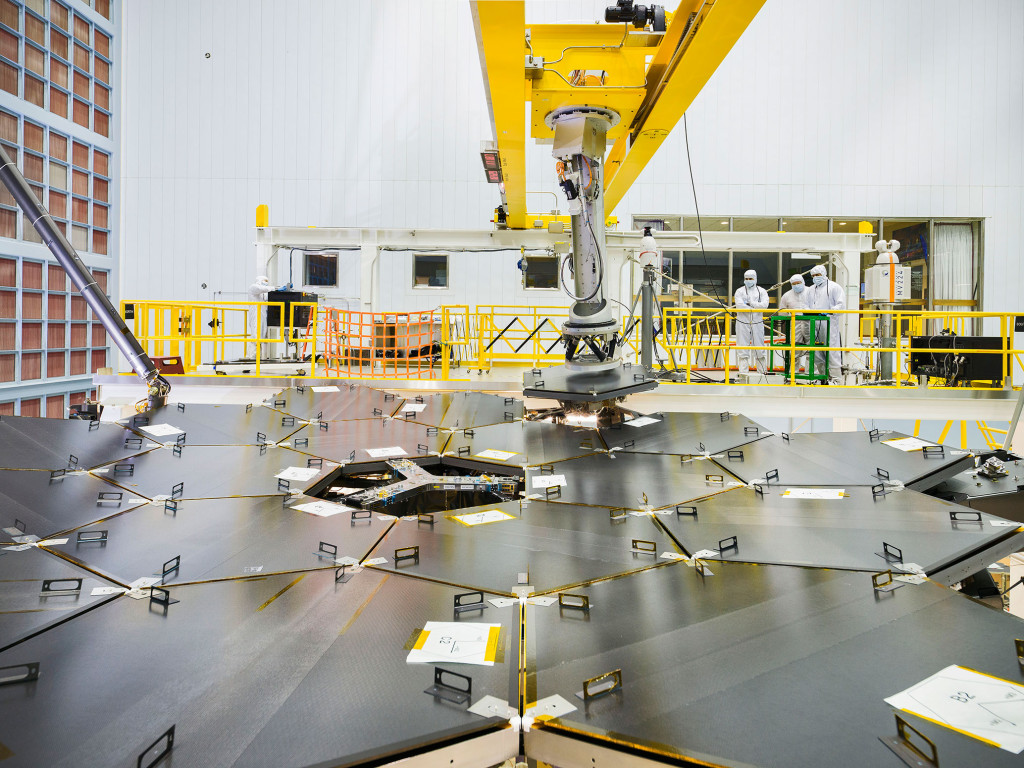
As always, there’s a ton of news to get to, from new HD photos of the lunar surface (courtesy of China, who’ve actually, you know, been there recently) to the completion of the JWST’s primary mirror (and more!). Read on!
***
The Moon in HD

This week we in the west caught on to the fact that China made a whole load of data public last month from its Chang’e 3 lander and Yutu rover. The Planetary Society’s chief “Planetary Evangelist” and all-around interesting human being Emily Lakdawalla has done us all a great service by downloading and sifting through literally dozens of gigs of data to bring us some of the best-quality full-colour shots from the moon ever taken. Above is a shot of the Chang’e 3 lander taken by the little Yutu rover, and at the top of the page is the reverse, a shot of the rover from the lander. China has recently announced both the discovery of a new type of lunar rock as well as plans for the Chang’e 4 to visit the far side of the moon in 2018. Check out Emily Lakdawalla’s post for so much more.
Stellarator On

German Chancellor (and PhD in quantum chemistry holder) Angela Merkel threw the ceremonial switch this week on the Wendelstein 7X stellarator, generating a quarter-second burst of eighty-million-degree hydrogen plasma in the experimental fusion reactor. I’ve talked about the W7X here before — check this link out if you want more explanation — but the basic premise of the stellarator is that the plasma twists without inducing a charge, thereby making it much more stable than a traditional tokamak. The W7X isn’t going to generate any power. I don’t mean “anytime soon,” either, I mean ever. The W7X is designed to test the properties of stellarators when built to spec using very very powerful computers to design them. This marks the first hydrogen plasma in the machine, but for the past few months the scientists at the Max Planck Institute have been running bursts of helium plasma to clean the pressure vessel and test out its sensors. This first phase of hydrogen testing will last until mid-March, after which carbon tiles will be installed as they start to ramp up containment times. The first goal will be ten seconds, but the ultimate goal — currently at the four year mark — is thirty minutes of sustained plasma. If successful, it’s possible the stellarator could be the model for an actually-functioning generator in ten to fifteen years. Check out the press release for more.
Massive Mirror

Although it isn’t scheduled for launch to its eventual home at L2 until 2018, the James Webb Space Telescope now at least has a completed primary mirror. The JWST’s massive segmented mirror, composed of eighteen smaller 4.2-foot-wide hexagonal mirrors, will be folded up during flight, and will fold back out like a massive reflective flower once the Hubble successor has reached its resting point, a gravitation eddy a million and a half miles from home. With the mirror complete, the assembly team now shifts to “installing the other optics and conducting tests on all the components to make sure the telescope can withstand a rocket launch,” according to JWST’s project manager Bill Ochs. And that’s no small order: at a million and a half miles away, we won’t be able to send someone to fix it if it breaks. This dozen-year build has to be perfect, first time. Check out the NASA press release for more.
ICYMI
If you missed anything here at This Week In Tomorrow this week, here’s your chance to check it out:
- On Monday, I advised against believe Deepak Chopra whenever he makes absurd claims
- On Tuesday, I explained that the calorie isn’t “broken” no matter what you may read elsewhere
- On Wednesday, I pointed to a new study showing how quickly massive conspiracies fail
- On Thursday, I spent my birthday grading student papers, so I didn’t post anything, and
- On Friday, Lindsey calmly explained that there’s a lot of cleaning up of past misogyny to do
Go have a look!
Best of the Rest
As always, more happened than could be covered by poor little old me on a Sunday morning when there’s dissertating to be done, so here’s your weekly linkspam!
- The gravity wave rumour mill is still grinding away
- Morocco’s massive solar farm is finally on
- Luxembourg wants to mine asteroids, you know, when we can do that
- The UK has given its first approval for human genome work using CRISPr
- The Verge explains why you SHOULD NOT BUY CHEAP USB-C CABLES EVER, and
- The work of Dadaist art that is the F-35 boondoggle is 100% predictably buggy
I leave you now with not one but two videos: first, a weather reporter being hit in the head with a fish:
And second, a perfectly normal arms dealer commercial. O_o “Just wait,” indeed.
That’s all for this week. Remember, I only get paid in my own (and your) enthusiasm, so please like This Week In Tomorrow on Facebook, follow me on Twitter @TWITomorrow, and tell your friends about the site! Have a great week.
